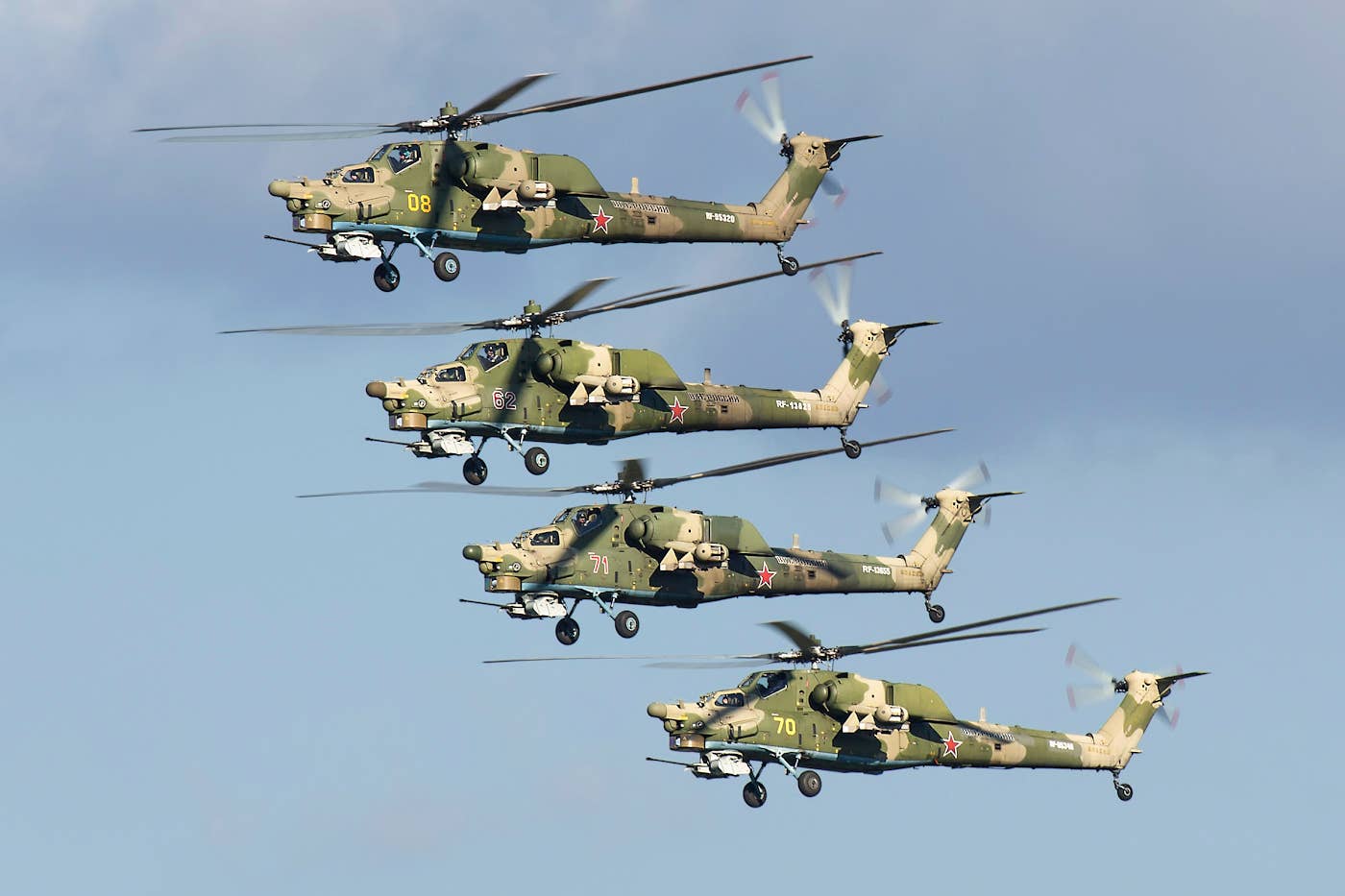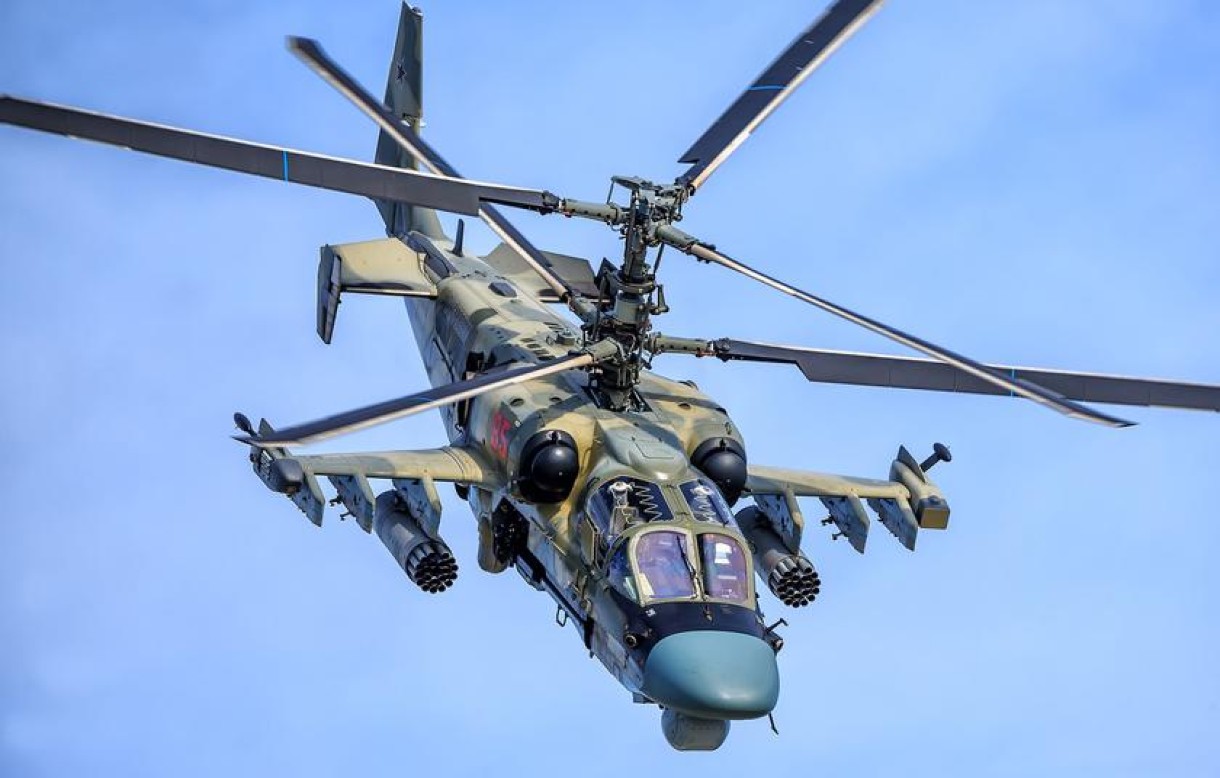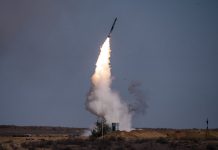Russia and Iran are reportedly discussing the potential of Moscow supplying Tehran with its Mi-28 and Ka-52 attack helicopters, the Institute for the Study of War said.
Updated versions of the Mi-28 and Ka-52 are among the Russian military’s most advanced attack helicopters. The Russian military has extensively used both choppers in the Ukraine war.
The ISW referenced a Tasnim news agency editorial highlighting how a joint Iranian-Russian production agreement might enable Iran to acquire Russian Mi-28 and Ka-52 assault helicopters.
The ISW, a United States–based think tank, stated Russia and Iran would seek such arrangements to ease the strain from US sanctions imposed on them.
Vyacheslav Volodin, the head of the Russian Duma, who visited Tehran on January 23, was quoted by the Tasnim news agency as saying that in light of the sanctions, increased trade between Russia and Iran is “extremely important.”
Furthermore, on January 23, Iranian President Ebrahim Raisi, Speaker of the Iranian Parliament Mohammad Bagher Ghalibaf, and Chairman of the Russian Duma Vyacheslav Volodin met in Tehran to discuss enhancing bilateral cooperation.
The aging rotary fleet of Iran’s air force would be considerably strengthened if the Mi-28 and Ka-52 were delivered. The report, however, omitted information regarding the model and number of helicopters that would be handed to Tehran.
The Mi-28 and Ka-52 have undergone several updates that, among other advantages, have improved their nighttime operational capability and weaponry.
Iran has provided Russia with its kamikaze drones to attack Ukraine’s vital infrastructure. In return, Moscow is expected to provide sophisticated fighter jets, helicopters, and missile defense systems.

It was also recently reported that the first 24 Su-35 Flanker-E fighter jets ordered from Russia are expected to arrive in Iran on March 21, the Persian New Year.
The new Sukhoi Su-35 fighters will undoubtedly meet some of the air fleet’s requirements, but the number of these aircraft and their associated equipment should also be factored into the equation, said the Iranian military observers.
According to many experts, the delivery of such sophisticated weaponry and the expansion of military cooperation between Iran and Russia would not only influence the distribution of military power in the region but also serve as a signal to western nations and their leading regional partner Israel.
Russia’s Mi-28 and Ka-52 Attack Helicopter
The development of the Mi-28 helicopter began on December 16, 1976, when the then-Soviet government ordered a modern combat helicopter to supersede the venerable Mi-24 Hind.
The Mil Mi-28 and Kamov’s Ka-50 (then a single-seater) were designed as two helicopters to satisfy this demand. These two attack helicopters battled for orders from the Ministry of Defense of the Soviet Union and later Russia over a long period, with varying degrees of success.
The Mi-28N and Ka-52 (now a two-seater), enhanced variants of both kinds that can fly at night, went into production in the late 2000s and are currently in use. The Mi-28NE and Mi-28NM are also modernized versions of the Mi-28 attack helicopter.
However, the Ka-52 has not performed brilliantly in the ongoing war, raising concerns about its survival ability on modern battlefields.
Egypt, the only other foreign operator of the Ka-52 helicopter and the buyer of 46 of them, was allegedly dissatisfied with its purchase and complained about technical issues and challenges operating them in hotter environments.

Yet, if delivered to Tehran, it would considerably boost Iran’s aging attack helicopter fleet.
The outdated AH-1J International variant of the Cobra, which Tehran purchased from Washington in the early 1970s, makes up most of Iran’s current inventory of attack helicopters. Iran produced the Toufan I and Toufan II versions of the AH-1J in the 2010s.
If reports from Russian media are to be believed, the variants of the Ka-52 and Mi-28 attack helicopters destroyed enemy fortifications and armor in Ukraine.
Russian state media said that the improved Ka-52M had been successfully tested in Ukraine in September 2022. TASS cited an unidentified source as saying that the Ka-52M has proved its capabilities in action.
The Russian state news agency reported in November 2022 that “a new multi-purpose missile” with an assured striking range of up to 14,500 meters will be included in the export versions of Russian Ka-52 M and Mi-28NM attack helicopters.
- Contact the author at ashishmichel(at)gmail.com
- Follow EurAsian Times on Google News




